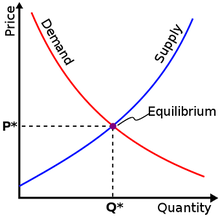01 Microeconomics

The purpose of this section is to identify and explain the importance of markets and the role played by demand and supply. The roles played by consumers, producers and the government in different market structures are highlighted. The failures of a market system are identified and possible solutions are examined.
The concepts learned here have links with other areas of the economics syllabus; for example, elasticity has many applications in different areas of international trade and development.
Topics covered in IB Microeconomics
BE ADVISED: Some students often find microeconomics to be the most challenging part of the course. Do you need to be a strong Math student to take Economics? No, you don't but you do need to be comfortable working with numbers.
The concepts learned here have links with other areas of the economics syllabus; for example, elasticity has many applications in different areas of international trade and development.
Topics covered in IB Microeconomics
- 1.1 Competitive markets: demand and supply (some topics HL only)
- 1.2 Elasticity
- 1.3 Government intervention (some topics HL extension, plus one topic HL only)
- 1.4 Market failure (some topics HL only)
BE ADVISED: Some students often find microeconomics to be the most challenging part of the course. Do you need to be a strong Math student to take Economics? No, you don't but you do need to be comfortable working with numbers.
